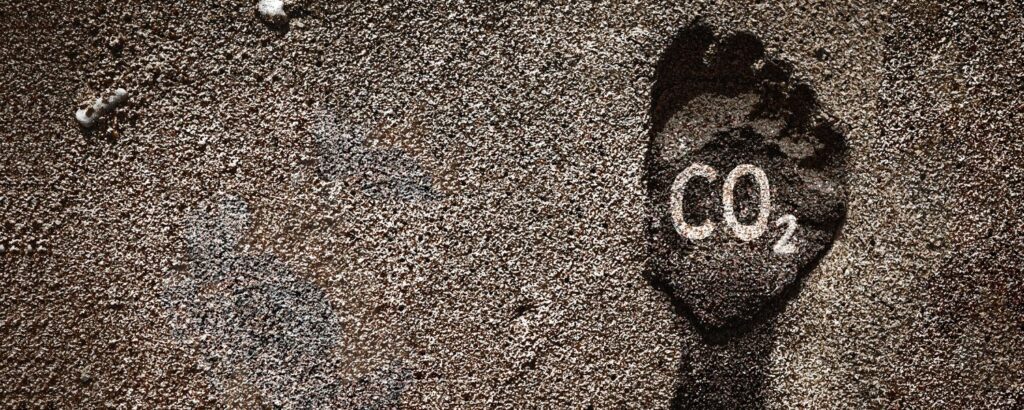Carbon insetting is a strategic approach where companies invest in projects within their supply chain to reduce carbon emissions. Unlike carbon offsetting, which involves compensating for emissions elsewhere, insetting focuses on internal reductions. This approach is increasingly popular because it directly impacts local environments and aligns closely with corporate sustainability objectives.
What is Carbon Insetting?

Carbon insetting integrates emission reduction projects directly into a company’s operations or supply chain. It targets emissions within the organization’s value chain, including suppliers and partners. This approach aims to comprehensively reduce carbon footprints by tackling emissions directly at their origin, rather than simply offsetting them.
How Does Carbon Insetting Work?

Companies identify opportunities within their operations or supply chain where emissions can be reduced. This might involve upgrading equipment, optimizing processes, or implementing renewable energy solutions. The goal is to achieve measurable reductions in greenhouse gas emissions that contribute positively to the environment.
Where Can Carbon Insetting Be Implemented?

Carbon insetting can be implemented across various industries and sectors where companies have direct control or influence over their supply chains and operational processes. Here are some key sectors where carbon insetting efforts can be effectively applied:
1. Manufacturing
Industries involved in manufacturing goods can implement carbon insetting by optimizing production processes, upgrading equipment to be more energy-efficient, and integrating renewable energy sources into their operations.
2. Agriculture
Agricultural businesses can adopt practices that reduce emissions from farming activities, such as improving soil management practices, minimizing fertilizer use, and deploying renewable energy solutions for irrigation and processing.
3. Transportation
Companies in the transportation sector can reduce emissions by optimizing fleet operations, investing in fuel-efficient vehicles, and adopting alternative fuels or electrification technologies.
4. Energy Production
Energy companies can focus on reducing emissions from power generation by investing in cleaner energy sources like solar, wind, or hydroelectric power and improving overall energy efficiency.
5. Supply Chain Management
Businesses across all sectors can work with their suppliers and partners to implement carbon insetting initiatives. This might include setting emissions reduction targets for suppliers, encouraging sustainable practices in raw material sourcing, and optimizing logistics to minimize transportation-related emissions.
6. Building and Construction
Companies involved in construction can implement carbon insetting through sustainable building practices, such as using low-carbon materials, designing energy-efficient buildings, and incorporating renewable energy solutions.
7. Retail and Consumer Goods
Retailers and consumer goods companies can implement carbon insetting by optimizing distribution networks, reducing packaging waste, and promoting sustainable product design and lifecycle management.
8. Services and Hospitality
Service-based industries and hospitality sectors can focus on energy efficiency improvements in facilities, promoting sustainable practices in guest services, and sourcing renewable energy for operations.
Carbon Insetting vs Offsetting
Carbon insetting differs from carbon offsetting in its approach and scope. While offsetting involves purchasing carbon credits to compensate for emissions elsewhere, insetting prioritizes internal emission reductions. This distinction allows companies to have a direct impact on emissions reduction within their operations and supply chains.
The Intersection of IoT and Carbon Insetting
IoT (Internet of Things) plays a very important role in enhancing carbon insetting efforts. IoT technologies enable real-time monitoring, data collection, and analysis, which is essential for identifying emission hotspots and optimizing efficiency. Sensors, smart devices, and data analytics platforms provide actionable insights that help companies implement targeted emission reduction strategies.
Benefits of IoT in Carbon Insetting Efforts

The benefits of IoT (Internet of Things) in enhancing carbon insetting efforts are significant, leveraging advanced technologies to optimize environmental sustainability practices and achieve meaningful environmental impact. Here are the key benefits of IoT in carbon insetting efforts:
1. Real-Time Monitoring and Data Collection
IoT sensors and devices provide real-time data on energy consumption, emissions, and operational efficiency. This capability allows companies to accurately monitor their carbon footprint and identify areas for improvement promptly.
2. Enhanced Visibility and Transparency
IoT enables transparency throughout the supply chain by tracking emissions across different stages of production and distribution. This visibility helps stakeholders understand the environmental impact of their activities and make informed decisions.
3. Optimization of Energy Efficiency
IoT technologies facilitate energy management through smart grids, automated systems, and predictive analytics. Companies can optimize energy usage, reduce waste, and lower emissions by identifying inefficiencies and implementing targeted improvements.
4. Remote Monitoring and Management
IoT-enabled devices allow remote monitoring and management of equipment and processes. This capability minimizes the necessity for on-site inspections, decreases operational expenses, and guarantees ongoing adherence to sustainability objectives.
5. Data-Driven Decision Making
IoT analytics provide actionable insights into operational performance and environmental impacts. Companies can use this data to prioritize emission reduction initiatives, allocate resources effectively, and measure the success of sustainability strategies over time.
6. Scalability and Integration
IoT solutions can integrate with existing systems and infrastructure. Whether in manufacturing, transportation, agriculture, or other sectors, IoT can be customized to fit specific operational needs and expand as businesses grow.
7. Facilitation of Carbon Reporting and Compliance
IoT facilitates accurate carbon reporting by automating data collection and analysis processes. This capability helps businesses comply with regulatory requirements, meet sustainability standards, and demonstrate environmental responsibility to stakeholders.
8. Promotion of Innovation and Collaboration
IoT fosters sustainable innovation practices by enabling collaboration among stakeholders. Companies can partner with technology providers, research institutions, and government agencies to develop and implement cutting-edge solutions for carbon reduction.
9. Cost Savings and Efficiency Gains
By optimizing energy use and reducing waste, IoT contributes to cost savings and operational efficiency. Companies can reinvest these savings into further sustainability initiatives or business growth opportunities.
10. Enhanced Corporate Reputation
Implementing IoT for carbon insetting showcases a dedication to environmental stewardship and corporate social responsibility. This enhances brand reputation, attracts environmentally conscious consumers and investors, and creates competitive advantages in the marketplace.
Carbon Insetting Projects
Carbon insetting projects encompass a variety of initiatives aimed at reducing carbon emissions directly within an organization’s operations or supply chain. These projects are integral to achieving sustainability goals and mitigating environmental impact. Here are several types of carbon insetting projects commonly implemented by businesses:
1. Energy Efficiency Upgrades
Companies invest in upgrading equipment and infrastructure to improve energy efficiency. This includes retrofitting buildings with energy-efficient HVAC systems, installing LED lighting, and optimizing manufacturing processes to reduce energy consumption.
2. Renewable Energy Integration
Companies embrace renewable energy sources like solar, wind, or biomass to fuel their operations. This involves installing solar panels, wind turbines, or biogas generators onsite or purchasing renewable energy credits to support clean energy production.
3. Transportation Emission Reduction
Businesses focus on reducing emissions from transportation activities by optimizing logistics, using fuel-efficient vehicles, and implementing fleet management strategies. This includes route optimization, vehicle electrification, and promoting sustainable transportation practices.
4. Waste Management and Recycling
Businesses execute waste reduction and recycling initiatives to decrease the amount of waste sent to landfills and reduce methane emissions. This includes composting organic waste, recycling materials like paper and plastics, and reusing materials in production.
5. Sustainable Agriculture Practices
Agricultural businesses adopt practices that reduce greenhouse gas emissions from farming activities. This includes soil carbon sequestration through conservation tillage, cover cropping, and agroforestry methods that enhance carbon storage in soils and vegetation.
6. Carbon Sequestration and Reforestation
Organizations invest in projects that enhance carbon sequestration, such as reforestation efforts or afforestation on degraded lands. Planting trees and restoring natural habitats contribute to carbon dioxide removal from the atmosphere.
7. Supply Chain Optimization
Companies work with suppliers and partners to implement carbon insetting throughout their supply chains. This involves setting emission reduction targets for suppliers, promoting sustainable sourcing practices, and collaborating on shared sustainability goals.
8. Water and Resource Efficiency
Businesses focus on reducing water consumption and improving resource efficiency to lower their environmental footprint. This includes using water-efficient technologies, optimizing resource use in production processes, and minimizing waste generation.
9. Community and Social Impact Initiatives
Organizations invest in community-based projects that benefit local communities and support sustainable development goals. This can include providing clean energy access to underserved communities, supporting educational programs on environmental stewardship, or promoting sustainable livelihoods.
10. Carbon Offsetting Verification and Certification
Companies use carbon offsetting projects that meet rigorous standards and verification processes. This involves acquiring carbon credits from verified projects that either remove or reduce greenhouse gas emissions elsewhere, thereby supplementing internal carbon insetting initiatives.
Conclusion
Carbon insetting represents a proactive approach to sustainability, allowing companies to reduce emissions directly within their operations and supply chains. The integration of IoT technologies enhances these efforts by providing real-time data and insights that drive continuous improvement. As businesses strive for environmental stewardship and regulatory compliance, carbon insetting supported by IoT emerges as a powerful strategy for achieving long-term sustainability goals.
VectorGlobe is crucial in advancing sustainable initiatives and carbon insetting efforts worldwide. By providing comprehensive solutions and expertise in renewable energy integration, energy efficiency upgrades, and sustainable development projects, Vector Globe empowers businesses to reduce their carbon footprint effectively. Their commitment to innovation and collaboration enables organizations to implement scalable and impactful environmental strategies, fostering a greener future. Through its diverse portfolio of services and dedication to environmental stewardship, Vector Globe helps businesses navigate the complexities of sustainability, driving positive change and enhancing global efforts to mitigate climate change.

